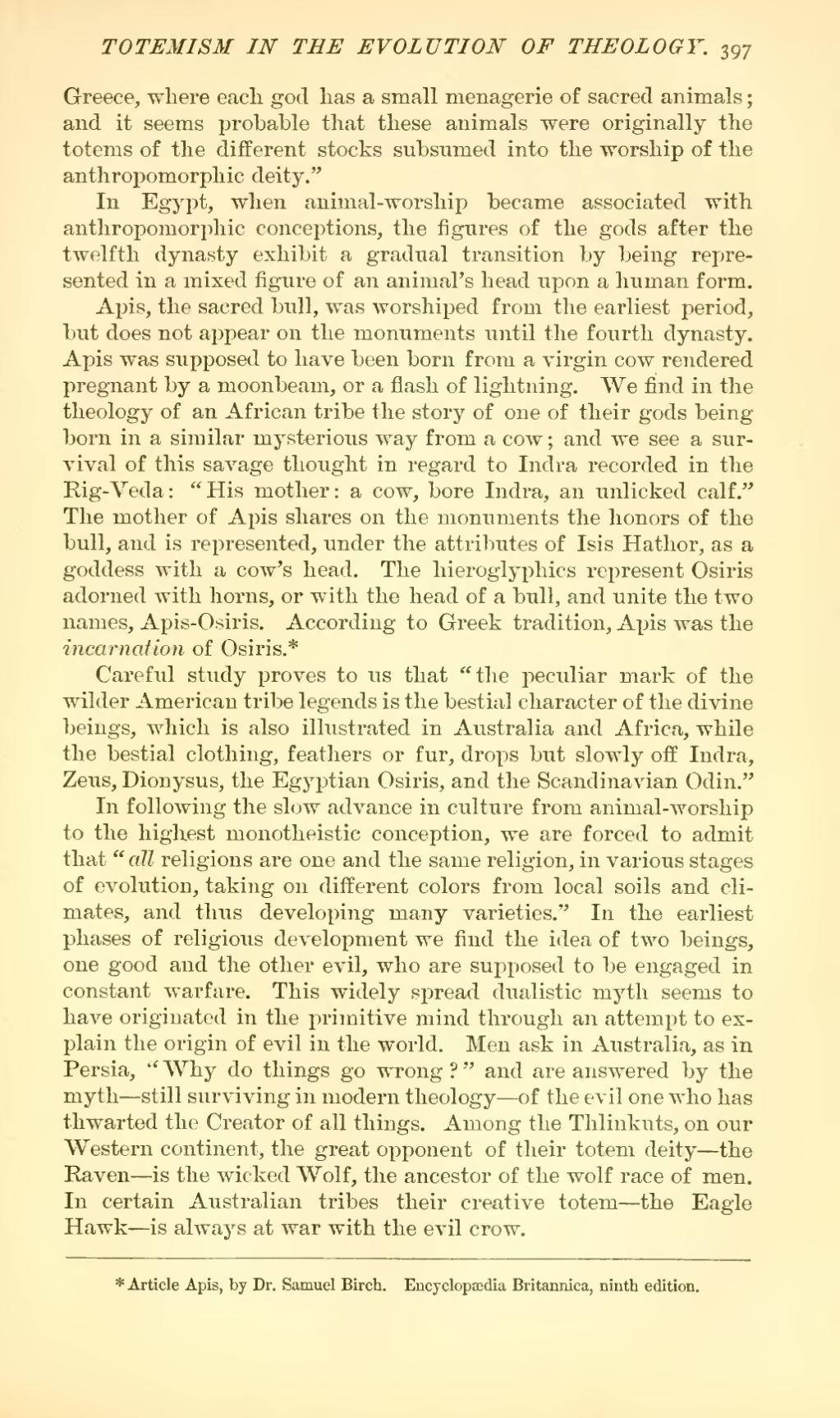Greece, where each god has a small menagerie of sacred animals; and it seems probable that these animals were originally the totems of the different stocks subsumed into the worship of the anthropomorphic deity."
In Egypt, when animal-worship became associated with anthropomorphic conceptions, the figures of the gods after the twelfth dynasty exhibit a gradual transition by being represented in a mixed figure of an animal's head upon a human form.
Apis, the sacred bull, was worshiped from the earliest period, but does not appear on the monuments until the fourth dynasty. Apis was supposed to have been born from a virgin cow rendered pregnant by a moonbeam, or a flash of lightning. We find in the theology of an African tribe the story of one of their gods being born in a similar mysterious way from a cow; and we see a survival of this savage thought in regard to Indra recorded in the Rig-Veda: "His mother: a cow, bore Indra, an unlicked calf." The mother of Apis shares on the monuments the honors of the bull, and is represented, under the attributes of Isis Hathor, as a goddess with a cow's head. The hieroglyphics represent Osiris adorned with horns, or with the head of a bull, and unite the two names, Apis-Osiris. According to Greek tradition, Apis was the incarnation of Osiris.[1]
Careful study proves to us that "the peculiar mark of the wilder American tribe legends is the bestial character of the divine beings, which is also illustrated in Australia and Africa, while the bestial clothing, feathers or fur, drops but slowly off Indra, Zeus, Dionysus, the Egyptian Osiris, and the Scandinavian Odin."
In following the slow advance in culture from animal-worship to the highest monotheistic conception, we are forced to admit that "all religions are one and the same religion, in various stages of evolution, taking on different colors from local soils and climates, and thus developing many varieties." In the earliest phases of religious development we find the idea of two beings, one good and the other evil, who are supposed to be engaged in constant warfare. This widely spread dualistic myth seems to have originated in the primitive mind through an attempt to explain the origin of evil in the world. Men ask in Australia, as in Persia, "Why do things go wrong?" and are answered by the myth—still surviving in modern theology—of the evil one who has thwarted the Creator of all things. Among the Thlinkuts, on our Western continent, the great opponent of their totem deity—the Raven—is the wicked Wolf, the ancestor of the wolf race of men. In certain Australian tribes their creative totem—the Eagle Hawk—is always at war with the evil crow.
- ↑ Article Apis, by Dr. Samuel Birch. Encyclopædia Britannica, ninth edition.
